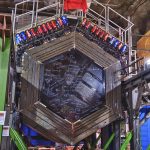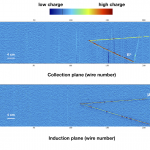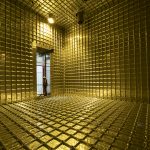From El Comercio, Feb. 18, 2019: Los neutrinos, esas part&iaacute;culas subatómicas, la más pequeñas y abundantes de la naturaleza, podrían ayudar a entender por qué el universo está hecho de materia.
neutrino
From William & Mary, Feb. 15, 2019: Scientist Patricia Vahle, a William & Mary professor and NOvA co-spokesperson, Patricia Vahle, Mansfield Professor of Physics at William & Mary, gives a talk on “The Quest to Understand Neutrino Masses” at the annual meeting of the American Association of the Advancement of Science in Washington, D.C. Neutrinos are one of the most abundant particles in the universe. And because of their interesting properties, physicists look to a fuller understanding of neutrinos to help unravel the universe’s mysteries.
From Aurora Beacon-News, Fermilab scientists and engineers are hoping to understand neutrinos — tiny particles that many feel hold the key to answering many questions about the universe — and are using a very large thermometer to do it.
From University of Missouri – Kansas City’s University News, Feb. 6, 2019: Sánchez, a scientist at Iowa State University, is a part of Fermilab’s NOvA neutrino experiment and the Deep Underground Neutrino Experiment. She also co-leads the ANNIE experiment at Fermilab.
The MINERvA neutrino experiment has a new crime scene investigation technique, one that takes a hard look at the traces that particles leave before fleeing the scene. Researchers used a new technique in a recent MINERvA neutrino investigation. And the new insights they gained on the workings of nuclear effects can help other neutrino experiments.
Scientists on the ArgoNeuT experiment have developed a method that enables them to better distinguish the tracks that particles leave behind in liquid argon, as well as a way to better differentiate between signals and background. And thanks to the software’s great performance, ArgoNeuT will aid larger neutrino experiments in their quest to understand the nature of the subtle neutrino.
For several weeks, a prototype detector for the Fermilab-hosted Deep Underground Neutrino Experiment collected data using beams from CERN’s particle accelerators. The results show a mature technology exceeding all expectations. It’s the culmination of three years of hard work by a global team dedicated to constructing and bringing the new detector online.
From the University of Rochester’s Campus Times, Jan. 23, 2019: A University of Rochester undergraduate working on the Deep Underground Neutrino Experiment is interested in characterizing neutrinos because of the broad impact the particles may have on the very existence of matter.
From Nature, Jan. 23, 2019: Fermilab’s neutrino program is mentioned positively in this editorial about plans for the next circular collider in Europe.
From Live Science, Jan. 12, 2019: In the 1920s, careful and detailed observations of those decays found tiny, niggling discrepancies. The total energy at the start of certain decay processes was a tiny bit greater than the energy coming out. The math didn’t add up. Odd. So, a few physicists concocted a brand-new particle out of whole cloth: A little, neutral one. A neutrino.



